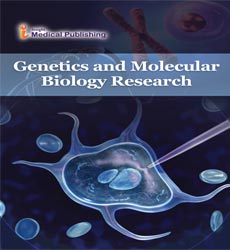Transgenic Mice Brain Imaging Studies of Alzheimers disease
Alzheimer sickness PET imaging specialists dependent on lipophilicity change are [18F] RO6958948 [1] and [18F] Florbetapir, plan by supplanting with a Nitrogen component either in the fragrant ring of [18F] Flortaucipir or [18F] florbetaben. The structure of [18F] FEONM (is intended to give higher lipophilicity than [18F] FDDNP. Structure alteration on a specific bioactive atom to expand its lipophilicity will likewise potentially expand the level of infiltrating blood cerebrum obstruction. Expanding the blood cerebrum obstruction crossing proportion, the particularity of this dynamic biomolecule focusing on impact may be diminished. Along these lines, we plan an ethyl oxide changed naphtha-based Alzheimer infection positron outflow tomography imaging specialist [18F] FEONM, to think about the take-up impact of Tau tangle and Beta-amyloid. PET radiopharmaceuticals for mind imaging depend on extremely short half-life radionuclides, the vast majority of them will be rotted in one day. One of the longest half-life natural radionuclides is fluorine-18, in this way basic advance to creating PET radiopharmaceuticals online is radio fluorination response. The most elevated radio fluorination response yield can be produced using a carboxyl glass reactor. In a carboxyl glass reactor, the capacity of the whole territory (FG) bend of radio fluorination yield can be drawn nearer with Gauss dispersion, Gauss, or Welch anodization work. After deciding the radio fluorination rate consistent, the length of the microfluidic plug stream reactor can be planned with an expository structure dependent on Welch anodization work. After deciding the radio fluorination rate consistent, the length of the microfluidic plug stream reactor can be planned with an expository structure dependent on Welch anodization work. Mind hippocampus imaging relative explicit restricting proportion of [18F] FEONM on a Tau tangle P301S/PS19 transgenic mouse model is double cross higher than cerebellum, Beta-amyloid Tg2576 transgenic mouse model is under two. On a triple transgenic 3xTg mouse model with both Tau tangle and Beta-amyloid framed, the take-up proportion of the hippocampus is 50% higher than the cerebellum. In addition, other than the transgenic mouse model, the streptozotocin actuated Tau tangle mouse model likewise shows higher cerebrum hippocampus [18F] FEONM take-up than the control mouse. From the transgenic mouse model imaging study, we discovered [18F] FEONM will take up on both Tau tangle and Beta-amyloid transgenic mouse. In contrast with [18F] FDDNP, it shows no Beta-amyloid transgenic mice take up in mind hippocampus. This outcome speaks to a part of the particular authoritative of Tau tangle transgenic mouse of [18F] FDDNP has moved to Beta-amyloid. In this manner, Tau tangle and Beta-amyloid take-up status should be possible by [18F] FEONM in a similar time for the conclusion of Alzheimer's illness. Radiation presentation will be half measurement contrasted with taking both imaging. These discoveries dependent on another plan presume that another PET radiopharmaceutical configuration has a similar idea to another radio fluorination microfluidic reactor plan.
Open Access Journals
- Aquaculture & Veterinary Science
- Chemistry & Chemical Sciences
- Clinical Sciences
- Engineering
- General Science
- Genetics & Molecular Biology
- Health Care & Nursing
- Immunology & Microbiology
- Materials Science
- Mathematics & Physics
- Medical Sciences
- Neurology & Psychiatry
- Oncology & Cancer Science
- Pharmaceutical Sciences
